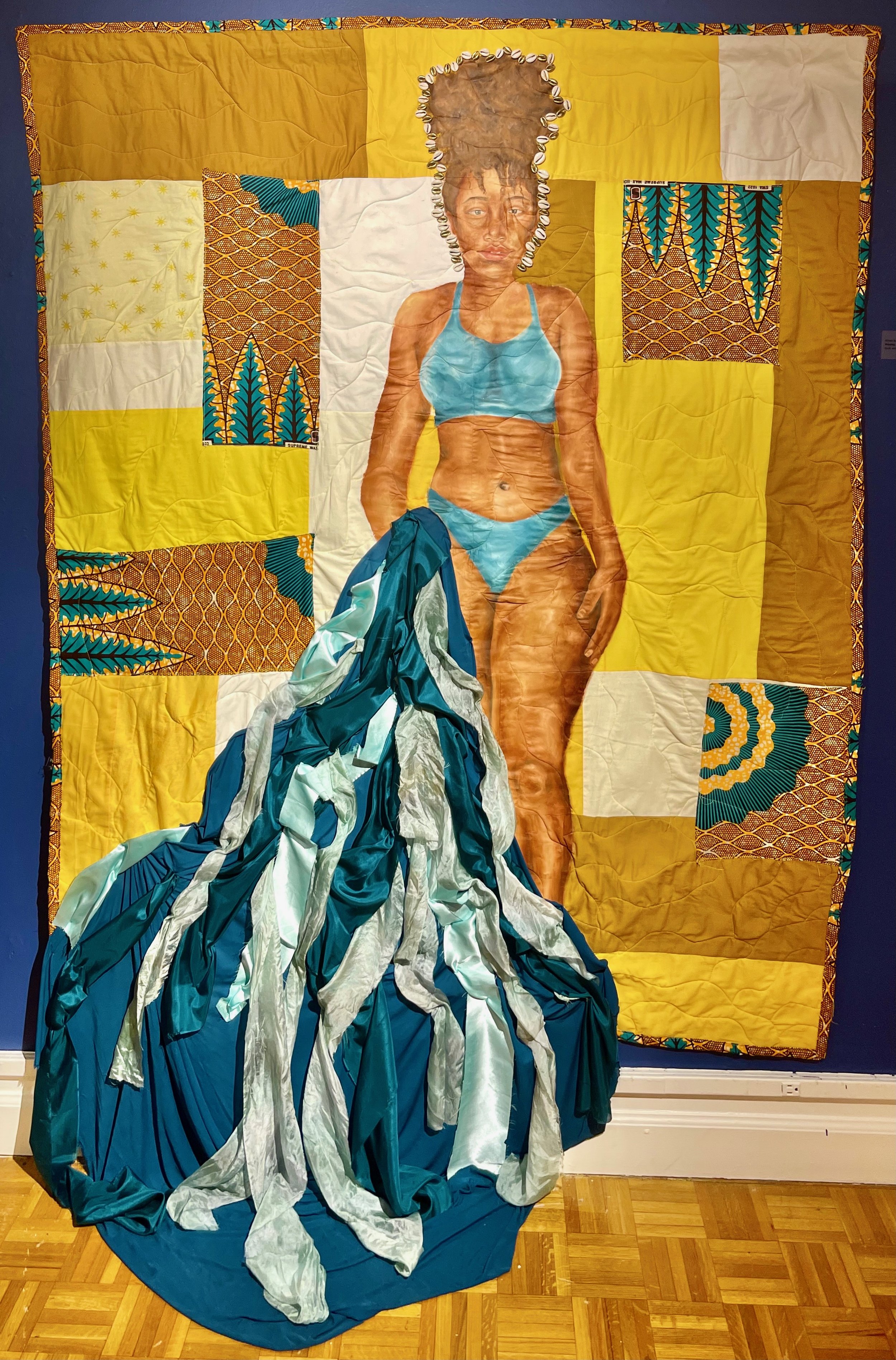Aliyah Bonette
ALIYAh BONETTE
Raliegh, NC
Aliyah Bonnette’s work is heavily influenced by her relationships with her late grandmothers, her ancestors, or what she refers to as her ‘Kindred’. She discovered textiles at age twenty after learning that quilting may have been used in the underground railroad to aid slaves to freedom. After sharing her adoption of quilting with her grandfather, he shared that he had quilts and fabric from her late grandmother. She was a quilter in the 1970s while living in Georgia and learned to sew by watching her mother. After traveling to Georgia with her mother, Bonnette discovered barrels full of my grandmother’s unfinished quilts as well as used and unused fabrics. “I was stunned. It was a sign that my grandmothers were alive within me, guiding me all along.”
Aliyah practices an improvisational style of quilting, creating painterly images of memories and stories, often centered around Black women. Her materials are a connection to her past as she incorporates the fabrics and unfinished quilts that belonged to her grandmother. The act of sewing becomes a way to stitch together the stories and memories of Black women across generations. These stories are moments of self-definition and empowering action and operate outside of a Western framework of violence and hypersexualization.
Bonnette believes that her Kindred who have lived through slavery and Jim Crow directly aid her in the process of making while simultaneously guiding her on her own path of womanhood.
And We Went is deeply rooted in the power and the movement of women. The attempted swim-in, led by Pearl George and Betty Claiborne, is one moment in a long thread of stories and memories held by Black women in response to segregation and Jim Crow. Bonnette’s practice speaks to that history. Wading in the Waters of Oshun represents the artist as the Yoruba deity of femininity, fertility, beauty, and love. Transported to the Americas via the slave trade, Oshun oversees fresh water and waterfalls; the very place where Black children often swam as a result of segregation, some losing their lives.


